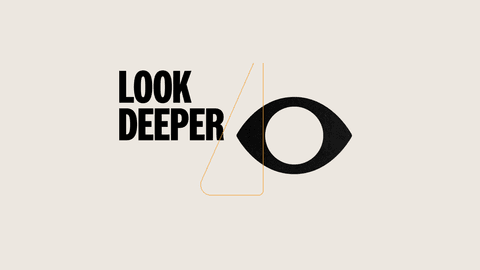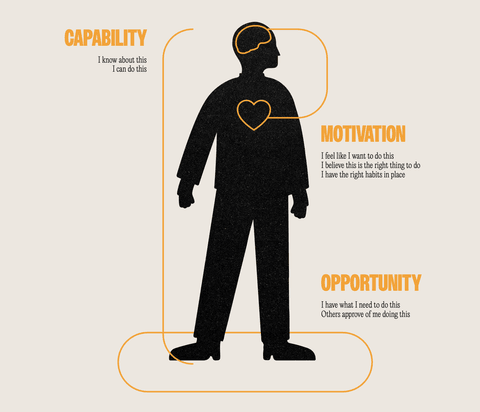NEWS ALERT - We won a SILVER IPM award for Best use of Social Media, 2025! Read more🏆

If you’ve ever made a New Year’s resolution to lose weight, quit smoking or join a gym, only to abandon it a month later, you are not alone. People are complex and changing behaviour is hard. Behaviour change models are essential in behavioural science because they synthesise complex theoretical insights about how people behave and make decisions into simple and actionable tools. COM-B is the result of a research effort, led by Prof Susan Michie and colleagues at University College London, to develop a robust and comprehensive tool to diagnose barriers to behaviour change. And this is how it works…
The COM-B model of behaviour change suggests that capability (C), opportunity (O) and motivation (M) are essential for any behaviour (B) to change. And these three components interact with each other. For example, by increasing the perceived capability for someone to do something, we can also positively influence their motivation to do it. It means interventions must target at least one of these things to create effective behaviour change.

But that’s not all. Each component of the COM-B model can be broken down into even more detail…
Capability refers to whether we have the knowledge and skills needed to do a particular behaviour. Its two components are:
- Psychological capability: our knowledge and our psychological and information processing skills (e.g. attention, memory, mental models…).
- Physical capability: our physical strength and skills.
Opportunity refers to the external factors that either facilitate a behaviour or make it less likely to happen. Its two components are:
- Social opportunity: social norms and cues that can encourage or discourage our behaviour.
- Physical opportunity: environmental cues and resources, such as time or money.
Motivation refers to all the cognitive and emotional processes that influence us and make us actually do a particular behaviour instead of any other possible behaviour. Its two components are:
- Reflective motivation: high cognitive processes, such as beliefs, values and goals. Your sense of self-identity and your beliefs about your ability to do things.
- Automatic motivation: automatic processes that are often outside of our awareness, such as emotional responses, habits, impulses and inhibitions.

COM-B is a powerful diagnostic tool that allows you to identify where the barriers to behaviour are, so you can design solutions that are more likely to influence capability, opportunity and motivation as needed. Let’s assume that we want to increase the number of consumers making purchases through your app.
Through a COM-B diagnosis you could identify barriers in psychological capability. For example, consumers may lack knowledge about your platform, or there might be uncertain elements making it less trustworthy. There could also be physical opportunity barriers, such as design elements that add friction and make the app less intuitive to use. Or there could be social opportunity barriers, such as a lack of reviews or social signalling from others.
All of this could negatively impact automatic and reflective motivation, with consumers having negative reactions towards your app and simply choosing to buy from a different platform.
Find out how we could apply COM-B and behavioural science to your projects here.